Word class: the essentials

Because this is an overview of 10 word classes, it contains links as you go along to more focused guides for most word classes. Those links open in a new tab (except for those in the table at the end) so you can follow them and then close the page to come back to this one.
Generally, 10 classes of words are recognised in English. These
are sometimes called parts of speech.
Take a piece of paper and see how many you can remember from school
and then click here.
Now ask yourself why these are divided into two groups.
When you have an answer, click for the answer.
Group A words are called
open-class items because in theory we
can keep adding more to the list indefinitely. Languages
consistently create new nouns, for example, to describe new events or
objects.
Group B words are closed-class items. We do not usually create
new prepositions (although we can) and introducing a new pronoun into
the language is extremely rare (although people keep trying).
There are other classifications which we could use and popular one
is to divide words into member of two groups:
-
Major word classes:
- Lexical or main verbs (which are verbs which carry intrinsic meaning such as hear, encourage, avoid, jump etc.)
- Nouns
- Adjectives
- Adverbs
-
Minor word classes
- Auxiliary verbs, which carry no intrinsic meaning but function to express how the speakers feels about the main verb (must, can, should etc.) or operate to make tense forms (have in he has arrived, be in he is laughing etc.). The first group of these are called modal auxiliary verbs and the second group are primary auxiliary verbs and there are guides to all of them on this site.
- Pronouns
- Determiners (which includes articles and demonstratives in the first division above)
- Prepositions
- Conjunctions
- Interjections
There is no simple way to divide the hundreds of thousands of words in the language as we shall see shortly.
One reason for separating word classes into these two
fundamental types is to allow us to think more clearly about
the language.
Closed-class, functional items are the concern of grammar but open
class items are the concern of lexis.
So, for example, choosing the correct item to go into a gaps
like this:
Mary gave John the video and
__________ was delighted with __________
is fundamentally a grammatical issue of selecting the
correct pronoun.
However, choosing the correct item to go in the gaps in
this:
Mary went into the __________ and
__________ the fridge to get some cold juice
is a matter of making appropriate lexical choices of the set
(technical term) of nouns or verbs which can fill the gaps
and make an acceptably comprehensible statement.
 |
Determiners: the missing class |
There is, in fact, a word class missing from this list which is
used in more modern grammars: determiners.
Determiners are words which modify nouns (just as adjectives,
demonstratives and articles do). In older grammars,
determiners were often classed as adjectives (we can have few
dogs and fewer dogs) or as demonstratives (these
books, that man) or as articles (the car, some sugar)
or even as pronouns.
This is not satisfactory in many ways so the modern term for words
such as each, all, more, the, a, several, these, either etc. when
they come before nouns is simply
determiner.
There is an essential guide to determiners on this site linked in the list of related guides at the end but how determiners work in English is not a simple matter to analyse and is the subject of a separate (and more difficult) in-service guide. Following the second guide successfully will be quite difficult if the area is new to you. You will almost certainly need to understand issues of (un)countability in nouns before tackling it.
|
|
Mini-test Now click for a test to see if you can identify what these different word classes actually do in the language. Don't worry if you don't get it all right. It's explained below. |
 |
Overlapping word classes |
It is a mistake to assume that we can look at a word and, from its appearance
or meaning, consign it to one of the 10 or 11 word
classes we have identified. That's not how it works.
In fact, we consign words to classes by their positions in sentences
and their grammatical function. Meaning comes a distant third.
This is what is meant:
- Some words are only members of one word class. So, for example, ceiling is a noun and nothing else, decide is a verb only, between is a preposition and so on.
- Many thousands of words can be members of two or more word
classes, however, depending on what they are doing in a sentence
so, for example, in:
Please clean the car
the word clean is operating as a verb but in:
The car is clean already
the word is operating as an adjective. - Some words have characteristics of more than one word class
so, for example:
that is a demonstrative determiner which has a plural form like nouns (those)
little is a determiner (and sometimes a pronoun) which has comparative and superlative forms (less and least) which makes it work like an adjective.
Another example is that in
He is running
the word running is clearly a verb but in
Running is good exercise
the word is operating as a noun but still looks like a verb (and retains its verbal meaning).
And so on. Do not be tempted to jump to conclusions and
suggest to learners that a word is always assigned to one of the
main classes. Context is vital.
The phenomenon we see here is called gradience or categorical
indeterminacy which simply means that we accept that word-class
boundaries are sometimes fuzzy.
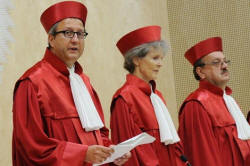 |
Three ways to judge word class |
How we assign words to classes can be managed by considering three factors, the last of which is the most powerful and accurate. They are:
- We can look at the meaning of words so we get rules such as:
- Words which describe things or people are adjectives
- Words which refer to objects and people are nouns
- Words which refer to actions are verbs
- Words which say where, when, how often or how an action is done are adverbs
This works OK when the words in question are well behaved but, unfortunately breaks down when we encounter words such as:
- politeness which is descriptive rather than referring to an object or a person but is not an adjective
- misfortune which is a noun but doesn't refer to an object or a person
- exertion which refers to an action but is not a verb
- frequency which refers to how often something happens but is not an adverb
- We can look at the form of words so we get rules
such as:
- Words which end in -ly are adverbs
- Words which take a plural form with -s or -es are nouns
- Words which take -d or -ed to show a past tense are verbs
- Words which can be altered to show degree by ending in -er or -est are adjectives
Again, this works well for many thousands of well-behaved words but breaks down when we consider:
- put which is a verb that doesn't change at all to show tense
- sheep is a noun which does not take a plural ending at all (but can be plural)
- information is a noun but it has no plural
- likely is an adjective which ends in -ly
- often is an adverb that doesn't end in -ly
- absent is an adjective which has no endings for degrees
- We can look at the grammatical function of a word
and see where it occurs in the structure of the language (its
distribution is the technical term). This does give us
workable rules because we can suggest:
- Nouns fill the gap in
The __________ broke the window - Verbs fill the gap in
She __________ the parcel - Adjectives fill the gap in
She was very __________ to see her mother - Adverbs fill the gap in
They __________ came to my house
- Nouns fill the gap in
There are other tests we can apply to decide on word class but in what follows, we will be using a combination of all three, depending mostly on the last one.
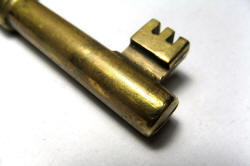 |
Key characteristics of word classes |
 |
Nouns |
Apart from obvious (and slightly inaccurate) distinctions between abstract
nouns (beauty, hope etc.),
concrete nouns (apple, table etc.) and proper nouns (James, Canada etc.), there is a key distinction
learners (and you) need to understand:
countability
and uncountability.
(There is a dedicated guide in this part of the site to mass and count
nouns linked in the list of related guides at the end.)
- Countable nouns can be preceded by a number (two cats),
a or an
(a dog) and a few (a few letters). They usually take plural endings.
In the plural, we use a plural form of the verb with them (are
not is, for example).
So we get, e.g.:
Two people have arrived and the woman is his sister - Uncountable nouns are better referred to as mass nouns and
cannot be preceded by a number or a few (but can be preceded by
some and a little) and only take plurals in unusual meanings when we make
them countable. We use the singular form of the verb with these.
The bare form of mass nouns can stand alone so we allow:
Milk is nourishing
but not
*Cigarette is bad for you
 |
Task On a piece of paper (or in your head if you have the memory for it), divide these into the two groups: mass or count: sugar, pea, furniture, happiness, sheep, army, money, attention, pliers, coffee, teacher, food, door, discomfort, information, luggage, suitcase, chair and then click here for some comments. |
It's not as easy as it looks, is it? There are two important things to understand.
- Some words (such as sugar and door) are clear cases of
uncountable and countable examples. Others are more complicated
because we can use them in both ways with different meanings.
Compare
You have my attention (mass)
with
His attentions are unwelcome (countable).
Some nouns, such as sheep are countable but take no plural. Some obviously countable things, such as money, are treated as mass nouns in English.
Virtually all mass nouns can be made countable in English when we are using them to classify things. For example
There are some coffees which are too bitter for me
They have lots of German wines on the list etc.
We also use mass nouns casually as if they were countable as in, for example:
I'll get the coffees
which is just a short way of saying
I'll get the cups of coffee - Different languages deal with these things differently.
In German, for example, information is a countable
noun. In Greek, so is money. When introducing a
noun, remember that students will probably presume it's
countable unless you make it clear otherwise.
So you'll get people saying furnitures and it'll be your fault, not theirs!
Nouns are quite a complicated area of the language and there is
an essential guide
to nouns linked at the end and also a more complicated and detailed
in-service guide to nouns on this site.
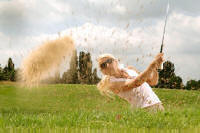 |
Verbs |
Verbs in English, and many other languages, come in three distinct flavours. This is what they are:
- Lexical or main verbs
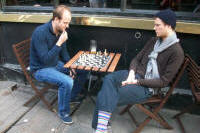
MOVE!
These are what most people think of when they are asked to give an example of a verb.
The verbs in this class carry their own meaning and can often stand alone and still make sense so, for example, we can understand what is meant if someone says:
Go
Speak
Read
Explain
Drink
and so on.
They also have a meaning which can be defined quite easily when they occur in phrases and longer units of language as in, e.g.:
She left
We spoke to them
She altered it
I drank the beer
and so on.
This is an open class of words so we can invent new verbs for actions and states which we want to decribe. Hence we get, for example:
Text me with the date
Google it
Upload the data
and so on. - Copular or linking verbs

LOOKING GOOD
These verbs also carry some kind of meaning but cannot be understood when they are used in isolation so, for example, while we can happily understand:
She grew angry
They got lost
We were in London
That appears correct
and so on, we cannot understand:
She grew
They got
We were
That appears
because we do not know what the subject of the verb is being linked to. Without that information, the statements make no sense. - Auxiliary verbs

EMPTY
These verbs carry no meaning at all because they are members of a closed class of functional words and their role in the language is grammatical. They cannot stand alone and mean anything to most people unless another main verb is understood.
All the highlighted verbs in the following examples are auxiliary verbs of some sort:
We were given the money
She has sent the letter
I had been told about it
She can't sing
I must go soon
They got their house repaired
We daren't ask
That should help a bit
You may be able to see from that list that there are two main sorts of auxiliary verbs:- Primary auxiliary verbs
These function to form tenses and other structures in the language and on this site, we recognise four:- have
which makes what are called perfect tenses such as in:
She has finished
They hadn't arrived in time
I will have sold it by then
and also makes what are called causative structures as in:
She had the work done
I had my pocket picked
They had the house swept
and so on. - be
which makes progressive tense forms such as in
She is working tonight
They are spending a week in France
She is always thinking of you
and also operates in English to make what are called passive sentences as in:
I was told
Mary isn't being invited
She will be sacked
and so on. - do
which is used in English to make questions and negative forms (and sometimes to emphasise a lexical or main verb) as in, e.g.:
Do you like this wine?
Did she see him?
Didn't he call?
I don't understand
We didn't go
I do enjoy it
etc. - get
which is not always considered a primary auxiliary verb but functions as one, like have, to make a causative as in, e.g.:
I got the house painted
She got him to paint the garage
etc.
and can also be used to make what is called a dynamic passive clause as in, e.g.:
The house got damaged in the storm
They got allowed into the club
- have
- Modal auxiliary verbs
These do not (with one exception) make tense forms or other grammatical structures. What these verbs do is to make the speaker / writer's stance clear. For example:
I can arrange that (expressing ability or willingness)
You should go home (expressing obligation)
I might help (expressing possibility)
It must break under that pressure (expressing a general truth)
(The exception is the verb will and its past tense, would. This verb can express the speaker's point of view as in, for example:
She will do it if you ask (expressing her willingness)
I would come earlier if it helped (expressing my willingness)
but it can also function as a primary auxiliary verb to make a future form as in:
I will be 40 tomorrow
She will have told her
The next train to arrive at platform 3 will be the 4:10 for London Paddington
They would have arranged it earlier.)
- Primary auxiliary verbs
All these forms of verbs have their own essential guides on this site and the following guides will open in new tabs:
lexical or main verbs | copular verbs| primary auxiliary verbs | modal auxiliary verbs
If you want to learn much more, try the in-service verbs index.
There is another key distinction which concerns lexical or main
verbs only.
Can you divide
this list into three groups? Think about how you use the
words in a sentence.
smoke, give, go, enjoy, breathe, beat, come, arrive, listen, see, hear, feel, say, speak, think, carry, jump, reciprocate
Click here when you've done that.
| Used with an object | Used without an object | Used both ways |
| give enjoy beat feel say carry |
go come arrive listen think reciprocate |
smoke breathe see hear speak jump |
The issue here is called
transitivity. Transitive verbs take an object,
intransitive verbs don't but some verbs can do both.
We can say
I smoke
with no object so intransitive, and
I smoked a cigarette
with the object so transitive.
We can say
She carried the box
transitive
but not
She
carried.
because carry is always transitive.
We can say
I arrived
He went
She came
but not
*I arrived / went / came the airport.
because arrive, go and come are all intransitive verbs.
Sometimes, there's a change in meaning:
He can hear
and
He can hear it
are different meanings of the verb.
When you teach a new verb, bear in mind that languages deal
with transitivity differently. In some languages, for
example, you can say
I jumped the table
meaning
onto, not over, or
She
listened the music.
Set verbs in a context and
make sure that your learners are aware of whether they are
transitive, intransitive or both.
There is an essential guide to lexical or main verbs, linked above.
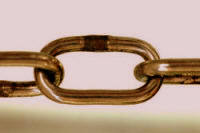 |
Conjunctions |
Here's another list to categorise. Conjunctions can
coordinate two clauses or they can
subordinate one clause to another
(making one clause depend on the other).
For example:
He makes the beds and he does the washing up
is an example of
and working as a coordinating
conjunction. Both parts of the sentence are meaningful without the
other.
I won't make the beds unless you do the washing up
is an
example of unless acting as a subordinating
conjunction. We can't understand the second clause without
reference to the first.
Here's the list to categorise.
but, after, although, as, and, as soon as, because, before, if, in order that, so, unless, until, when
Click here for the answer.
| Coordinating | Subordinating |
| but so and |
after although as as soon as because before if in order that so unless until when |
Notice that so appears in both columns. It can be
coordinating, as in
He is a farmer, so is his brother
and
subordinating as in:
I did the washing up so you can make the beds.
There are many more subordinating conjunctions and they carry a range of
meanings: conditionality (if, unless), consequence (so),
reason (because), time (when, until) etc.
Once a learner is able to use coordinating conjunctions, it's time to
teach subordination.
There is a third type of conjunction
you need to know about: correlating (or correlative) conjunctions.
Here's the list:
both ... and, just as ...so, (n)either ... (n)or, whether ... or,
not only ... but (also)
Can you make an example using these? This class of
conjunctions is confined pretty much to linking ideas inside sentences
rather than linking sentences together. Click
here for some
examples of them in use.
Both John and Mary are coming
Neither Fred nor I can open it
Either you do it now or you can wait until I have time
I don't know whether they are coming separately or together
The problem is not only important but (also) urgent
There is an essential guide to conjunctions linked at the end and from there you can go on to a more advanced guide to conjunctions on this site. Both guides also deal with correlating conjunctions (the third sort).
 |
Prepositions |
This a notoriously difficult area of English because there's seems
little rhyme or reason to which preposition we use where. The
other issue, as usual, is that languages differ. Some languages
don't use prepositions at all, preferring postpositions, so we
get The bridge along.
But there are some rules.
- Distinguish between movement and position:
- I went to the station (direction of movement)
- I arrived at the station (position)
- Distinguish between exact place and general place:
- He is in the station at the booking office
- He is in London at the station
- Distinguish between exact time and approximate time in the same
way:
- He came at 6 o'clock in the morning
- The earthquake happened at 4 in the afternoon, on a Monday in March
- Distinguish between prepositions which describe absolute
position and those which describe things from the speaker's point of
view:
- The house is between two trees / the house is next to / near the cinema / the house is opposite the church (wherever you are standing)
- The house is behind the trees / the house is in front of the garage (from where you are standing)
There is an essential guide to prepositions on this site linked at the end.
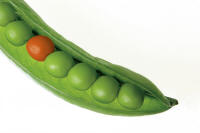 |
Adjectives |
There is, of course, a separate essential guide
to adjectives linked at the end so this will be brief.
Adjectives in English modify nouns (usually) to distinguish them in
some way and (usually) come in
one of two places:
- Before the noun they describe (attributive use):
- a fat cat
a huge house
etc. - After the noun they describe and linked to it by a verb such as be, look like, taste, smell, appear etc. (predicative use):
- The cat is fat
The house appeared huge
etc.
 |
Articles |
Articles are a sub-class of determiners. We said above that
we would explain why we are usually concerned with only nine word
classes and it is because articles used to be considered a separate
class but are now included as a subset of determiners. They
have, however, some important characteristics and are usually
treated as a separate target for teaching purposes.
Again, there's
a guide to the
essentials of articles linked at the end and from there you can
access a
more advanced guide to articles on the site.
There are only three true articles in English: a, an and
the. The other choice in English is no article at all
and that is usually represented by a zero sign, like this: Ø.
The zero article is important because it is used in English to refer
to all instances of something.
(Some analyses will include some in the
list but it's actually not an article although it can work in a very
similar fashion.)
A few examples are all that's needed here:
a house,
a university,
an apple etc. (The
choice of a or an is determined by the sound
at the beginning of the following word,
not the spelling.)
the house,
the man I met etc.
Ø people often complain,
Ø cars pollute,
Ø smoking is bad for you,
Ø water is a scarce resource etc.
The rules for deciding which article to use are not easy so go to the guide to articles for more detail. Essentially, the rule is:
Decide what you are talking about. There are only three choices:
- One of many – indefinite specific reference (a house, a person, an idiot etc.)
- All of them, everywhere – generic reference (Ø people, Ø tigers, Ø computers etc.)
- This one exactly – definite specific reference (the woman on the corner, the train for Ø London, the visitors to the park, the tourist industry etc.)
 |
Adverbs |
Adverbs are words which modify just as adjectives modify
nouns.
In English, adverbs do three things:
- They modify verbs (hence the name):
I walked slowly
She went outside
They enjoyed the play immensely - They modify adjectives:
She is extremely rich
They were deeply unhappy
That's an unnecessarily rude thing to do - They modify other adverbs:
He drove extremely carefully
She came very late
They talked quite amicably
In many languages they are not distinguished from
adjectives but English is not like that.
There is an
essential guide to adverbs on this site linked below so a few examples of
what is meant will do here:
He walked slowly and
carefully to the door
(answering how?)
He's is coming soon
(answering when?)
He sometimes tells tall stories
(answering how often?)
They wandered around
(answering where?)
She mostly enjoyed the
party (answering to what extent?)
etc.
 |
Pronouns |
Pronouns are a sub-class of what are called pro-forms and stand
for nouns or ideas.
There are guides to pronouns on this site accessible from
the initial plus
words index.
Pronouns usually stand in for or replace nouns so instead of saying:
The
rain fell and the rain was heavy
we can say:
The rain fell
and it was heavy.
And, instead of:
When I read the book, I realised how good the book was
we can say:
When I read
it, I realised how good the book was
In the first example, the pronoun refers back to the noun (rain)
and in the second it refers forward to the noun (book).
Sometimes, pronouns can stand for whole clauses or even longer
pieces of language as in, for example:
Getting the report written up and delivered to the right
people on time was difficult but she managed
it
in which the pronoun it stands for the whole of Getting
the report written up and delivered to the right people on time.
Essentially, there are two sorts:
- Personal pronouns. For example:
- Mary didn't have a pen so I
gave her mine
(instead of
Mary didn't have a pen so this person gave Mary the pen belonging to this person) - Other pronouns. For example:
- Somebody is at the door
(instead of An unknown person is at the door)
Nothing is too much trouble
(instead of No action is too much trouble)
He wanted money so I gave him some
(instead of The male person wanted money so this person gave the male person some money)
 |
Demonstratives |
Demonstratives are a sub-class of determiners.
There are four of these in English (this, that, these, those),
although some other expressions work rather similarly,
and they refer to what we want to talk about. In other words,
they demonstrate or point out what we are referring
to. There are two decisions to make:
- Is it near or far?
- Use this or these for things near to you:
I want this one
I can give you these tickets
Use that or those for things further away:
Can I have that one?
Take those tickets over there - Is it singular, mass or plural?
- Use this and that for singular or
mass nouns:
Give him that wine
I didn't ask for this meal
Use these and those for plural nouns:
Can I take these glasses?
I haven't opened those bottles yet
Demonstratives can also act as pronouns:
I don't want these apples
(demonstrative), I want those
(pronoun).
Demonstrative determiners are considered in the essential guide to determiners, linked below.
 |
Interjections |
This is the simplest class of all. These words are not, in
a sense, 'real' words because they represent noises things and
people make. For example:
"Ouch!" he cried.
"Aaargh!
I've done it again."
"Pssst."
he said.
The car went 'clunkety-clunk' and
stopped
 |
Words and phrases |
In this guide, for the sake of simplicity, we have been focusing
on individual words to identify the classes into which they fall.
However, all word classes can sometimes be represented by phrases
so, for example, in:
Dogs are often faithful
we have four single words acting as representatives of word classes
(nouns, verbs, adverbs and adjectives respectively).
However, in:
Peter's old dog has been almost always
faithful and loving
we have phrases forming representatives of phrase classes but
their grammatical functions are parallel. The phrases are:
noun: Peter's old dog
verb: has been
adverb: almost always
adjective: faithful and loving
Here are some more examples of phrases acting in the same ways as single word classes:
- nouns
- car : William's old Volvo
house : corner house with a blue door - verbs
- went : must have been going
have : can't have had - conjunctions
- so : in order to
but : either ... or - prepositions
- on : in front of
by : at the back of - adjectives
- black : old, green French
sunny : cold and wet - adverbs
- usually : now and then
carefully : slowly and thoughtfully - determiners
- my: all the
the : half the many - pronouns
- her : each other
us : one another
There is nothing particularly mystifying about this but it is worth bearing in mind that when we talk of word class, we really mean word or phrase class.
Summary
The following is a basic summary which leaves out rather too much
but covers the essentials of word classes.
You can click on the green areas of your choice to go to the
essential guide to the individual word classes.
You can get it as a PDF document by clicking
here.
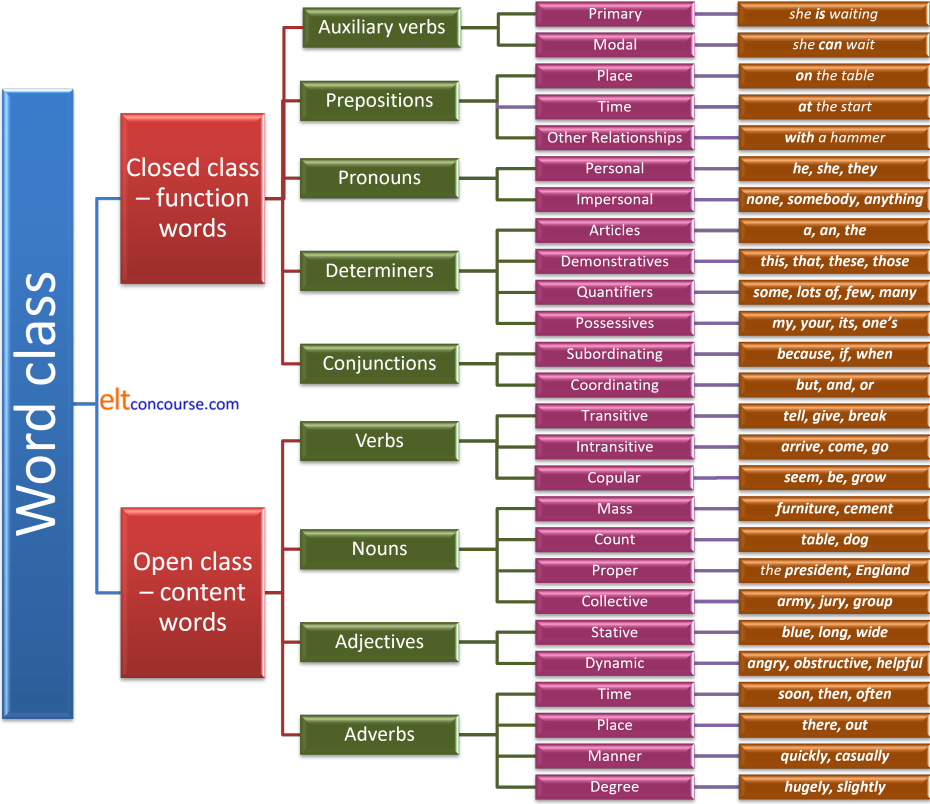
 |
An important distinction |
This distinction is one which confuses people new to the analysis of English (and sometimes, alas, people who should know better).
- Word class
is to do with an item's syntactical function but that does mean that it is the same as grammatical function.
For example, we know that in something like:
Put the old __________ on the table
we can fill the gap only with a noun or a noun phrase to get something like:
Put the old grammar books on the table
We know too that the phrase grammar books is a noun phrase and that this is how we talk about its class. - Grammatical function
is to do with how the items fit together in a sentence or clause. In the example above, the phrase grammar books is the object of the verb put.
Other word class items can also perform the grammatical function of the object of a verb and they are highlighted in black in these examples:
I think in the corner is a good place
I want to go
She told me
We can also make a noun or noun phrase the subject of a verb and that is the grammatical function of the highlighted items in:
Fred went home
The grass grew too long
The people in the corner have not ordered yet
and so on.
But other word-class items can also function grammatically as subjects so we may also find:
To visit would be wonderful
Under the stairs is the best place
We left early
and so on.
Grammatical function refers to what the item is doing in relation to the rest of the sentence but that is different from an item's word or phrase class.
The three grammatical functions are usually confined to:- subjects: The old lady gave her the money
- indirect objects: The old lady gave her the money
- direct objects: The old lady gave her the money
(The situation regarding grammatical function is actually a bit more complicated than this, but, providing you are clear about the difference between word class and grammatical function, that's enough.)
Click for a test of the key elements of word class.
| Click on the green sections
of the diagram above for the guides to individual word classes. Other related guides are: |
|
| the word-class map | this link takes you to the index of guides to word classes on this site including ones in the in-service area |
| initial plus words and vocabulary index | from here you can track down other guides related to words and meaning |
| in-service lexis index | for more advanced and technical guides to various areas of lexis |
| word and phrase class | for a more advanced guide to the area which assumes knowledge of this guide |
| articles: essentials | for the initial plus guide to the area |
| (un)countability | for a guide which focuses on this area |
